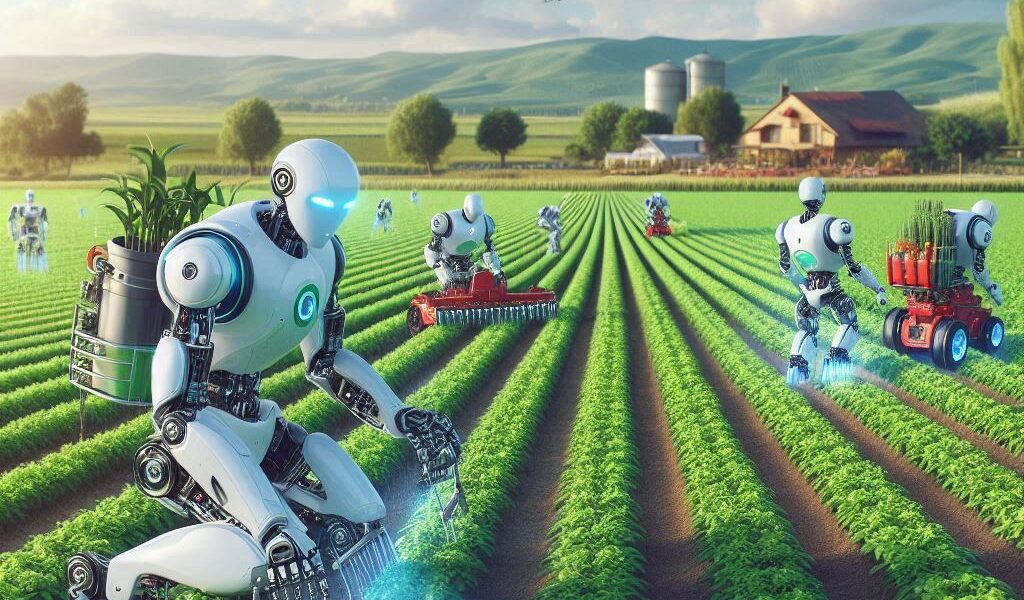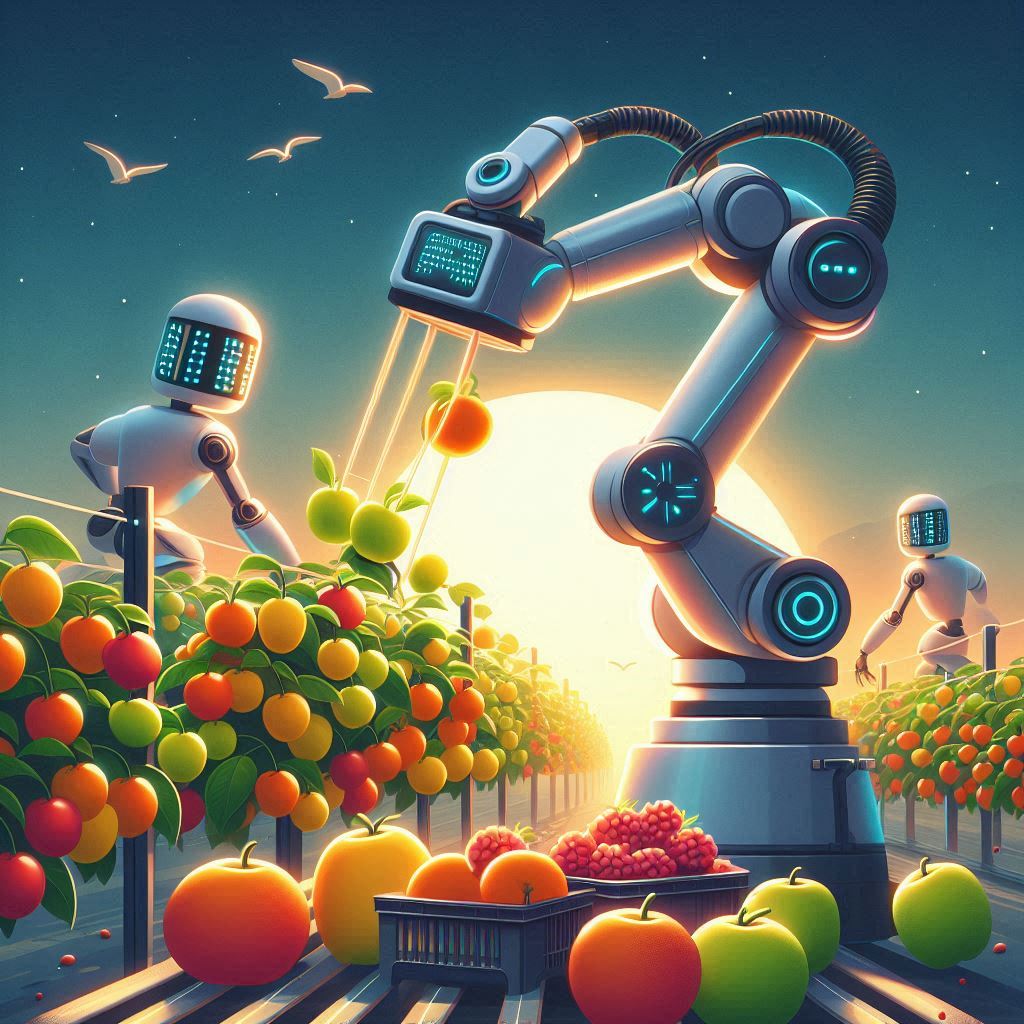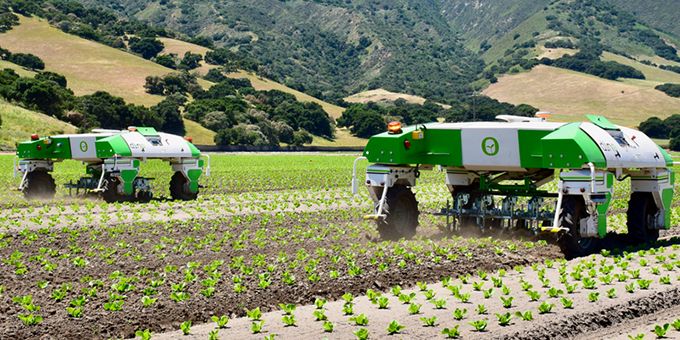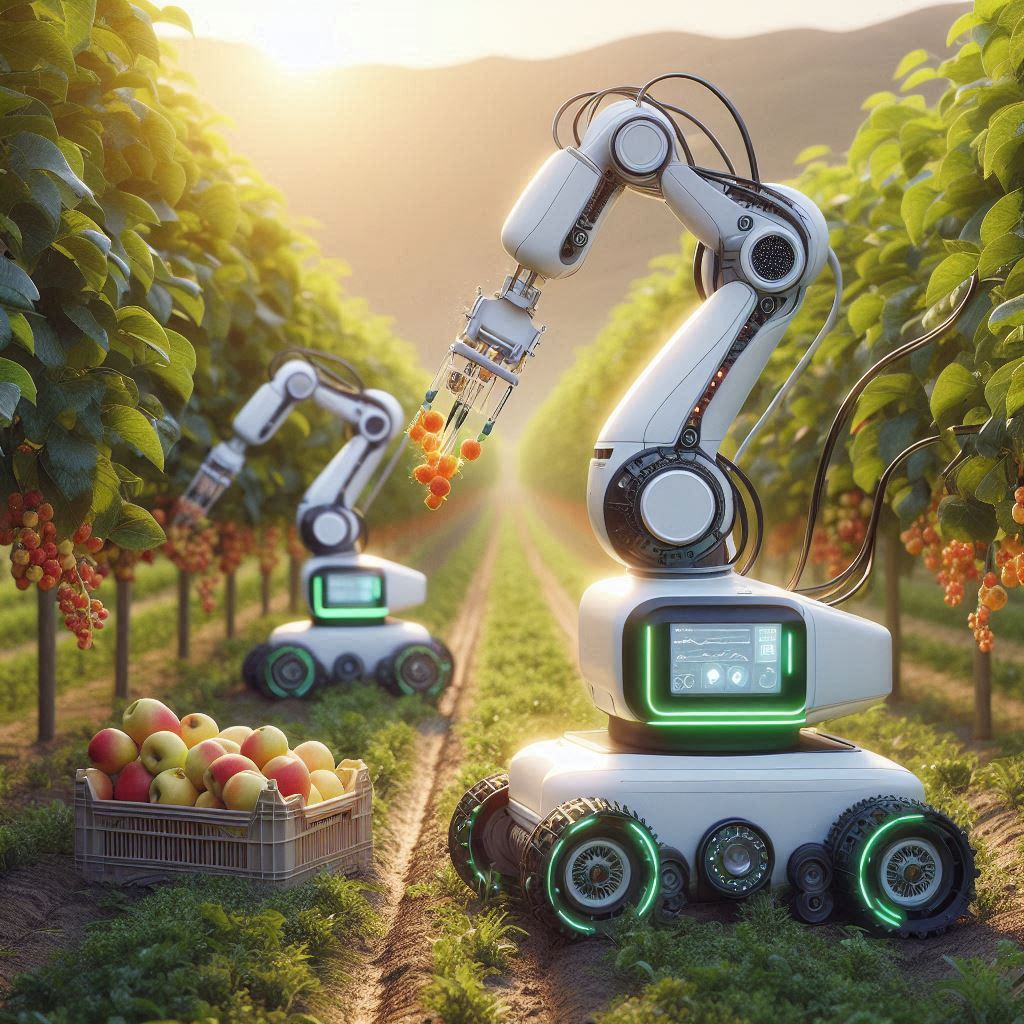Contents
How AI-Powered Robots Are Transforming Farming for a Sustainable Future
Prof. Aécio D’Silva, Ph.D
AquaUniversity
Summary:
Imagine a farm where robots plant seeds with pinpoint accuracy, drones monitor crop health in real time, and autonomous harvesters gather produce with minimal waste. This is not science fiction—it’s the reality of intelligent agribusiness powered by agricultural robots.
Agricultural robots are reshaping the farming landscape by automating tasks like planting, weeding, harvesting, and crop monitoring. These robots equipped with advanced sensors and AI enable precision agriculture, optimizing resource usage, increasing crop yields, and reducing labor costs. This blog explores the key applications, benefits, future potential, and challenges of agricultural robots in intelligent agribusiness.
The global population is projected to reach 9.7 billion by 2050, demanding a 70% increase in food production. Traditional farming methods, reliant on manual labor and no digital resource management, are being transformed by new technologies. Enter agricultural robots—the game-changers in modern farming. By leveraging AI, machine learning, and IoT, these robots drive precision agriculture, ensuring smarter, more efficient, and eco-friendly farming practices.
Key Applications of Agricultural Robots
-
Precision Planting
Agricultural robots are revolutionizing planting by ensuring seeds are sown at optimal depths and spacing. Equipped with GPS and AI, these robots analyze soil conditions and plant seeds with unmatched accuracy, leading to higher germination rates and reduced seed waste.
-
Automated Weeding
Weeding is labor-intensive and often relies on herbicides, which can harm the environment. Robots like “See & Spray” use computer vision to identify weeds and precisely target them with herbicides or mechanical removal, reducing chemical usage and labor costs.
-
Smart Harvesting
Harvesting robots, such as those used in strawberry or apple farming, use AI to identify ripe produce and harvest it without damage. These robots work tirelessly, ensuring faster and more efficient harvesting while minimizing crop loss.
-
Crop Monitoring and Analysis
Drones and ground-based robots equipped with multispectral cameras and sensors monitor crop health, soil moisture, and nutrient levels. This real-time data allows farmers to make informed decisions, improving crop yields and resource management.
Benefits of Agricultural Robots
-
Increased Efficiency and Precision
Robots perform farming tasks with unparalleled accuracy, reducing human error and optimizing resource usage. This precision leads to higher crop yields and better-quality produce.
-
Reduced Labor Costs
With robots handling repetitive and labor-intensive tasks, farmers can reduce their reliance on manual labor, addressing labor shortages and lowering operational costs.
-
Sustainable Farming Practices
By minimizing the use of water, fertilizers, and pesticides, agricultural robots promote sustainable farming. This not only conserves resources but also reduces the environmental impact of agriculture.
-
Data-Driven Decision Making
AI-powered robots collect and analyze vast amounts of data, enabling farmers to make informed decisions about planting, irrigation, and pest control. This leads to smarter farming practices and improved productivity.
The Future of Agricultural Robots
-
Integration with IoT and Big Data
The future of agricultural robots lies in their integration with IoT and big data analytics. This will enable seamless communication between robots, sensors, and farm management systems, creating a fully connected and intelligent farming ecosystem.
-
Swarm Robotics
Swarm robotics, where multiple small robots work together, could revolutionize large-scale farming. These robots can collaborate to perform tasks like planting, weeding, and harvesting more efficiently.
-
AI Advancements
As AI continues to evolve, agricultural robots will become even smarter, capable of predicting crop diseases, optimizing irrigation schedules, and adapting to changing environmental conditions.
Challenges of Agricultural Robots
-
High Initial Costs
The development and deployment of agricultural robots require significant investment, which can be a barrier for small-scale farmers.
-
Technical Complexity
Operating and maintaining advanced robotic systems require technical expertise, which may not be readily available in rural farming communities.
-
Data Privacy and Security
The reliance on data collection and analysis raises concerns about data privacy and security. Farmers need assurance that their data will be protected from misuse.
-
Adaptation to Diverse Environments
Farming conditions vary widely across regions. Developing robots that can adapt to different climates, terrains, and crop types remains a challenge.
Conclusion
Agricultural robots are at the forefront of the intelligent agribusiness revolution, enabling precision agriculture and sustainable farming practices. By automating tasks like planting, weeding, harvesting, and crop monitoring, these robots are improving efficiency, reducing costs, and increasing crop yields. While challenges like high costs and technical complexity remain, the future of agricultural robots is bright, with advancements in AI, IoT, and swarm robotics poised to transform farming further. Embracing this technology is key to meeting the growing global demand for food while preserving our planet’s resources.
References
- FAO. (2021). The Future of Food and Agriculture: Trends and Challenges.
- Zhang, Q., & Wang, C. (2020). Agricultural Robots: A Review of Recent Developments. Journal of Field Robotics.
- Bogue, R. (2019). Robots in Agriculture: A Review of Current Trends. Industrial Robot Journal.
- USDA. (2023). Precision Agriculture: Technologies and Their Impact on Farming.






